Hello, and welcome back.
First off, I want to make a quick announcement. Thank you to everyone who purchased The Tree of Life: A Beginner’s Guide. The sales have been good enough that there’s a good chance I will release another e-Grimoire before the end of the year.
I understand that these are difficult and confusing times for some, and as far as I’m concerned all this will continue for at least several more years. This first book was introductory, but from now on I shall focus more on practical magick that can be done to improve one’s life and find one’s path.
But let’s move to today’s topic: Fairy Salve, and how to make it for spiritual and occult purposes.

The Story of the Fairy Ointment
The idea of “Fairy Salve” or Fairy Ointment comes to us from English and Celtic folklore. It’s essentially a folktale.
Like many other stories of its kind, it was most likely the result of strange encounters with some kind of occult phenomena.
There are many variations of the story, but in general it goes like this:
A nurse/midwife is visited at midnight by a strange looking man at her doorstep. He tells her that his wife is too ill to give birth alone, and he needs her help. The midwife is suspicious, but goes along with him in his horse drawn carriage, to his home.
There, she helps deliver the child, and cares for it while the mother recovers. She is instructed by the mother to rub a certain ointment on the baby’s eyes when it wakes up.
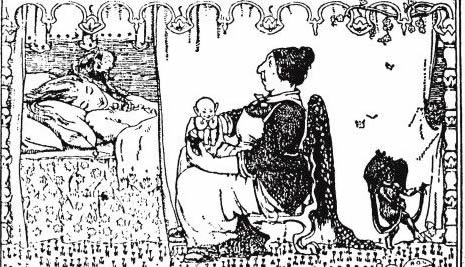
In some versions of the tale, the baby is anointed all over its body. Anyway, the baby opens its eyes, and the midwife notices his pupils are large and oddly shaped, almost like slits. But does as she was told, rubbing its eyes with the ointment. Either by accident or out of curiosity, she rubs some of it on her right eye, and immediately her surroundings change.
The small cottage is transformed into an elaborate or luxurious castle. In some versions, it turns into a dank (haha) cave. The midwife sees the child and its mother have turned even more beautiful (or ugly, in the cave version). She sees the baby’s siblings, who also have a strange appearance, playing around and doing all kinds of mischief, and realises she is in the home of pixies.
She doesn’t say anything, and when the father returns she demands to be taken home immediately. She sees the horse that draws the carriage is now pitch black with burning eyes. Upon returning home she is given a large payment. Some days later, she is at the market and sees the strange man, tha father of the baby, at the market. He’s taking whatever he wants from various different stalls, though no one seems to notice.
She immediately calls him out on it for stealing, and he is surprised by this. He demands to know if she can see him, and she says yes (famous last words). In response, he accuses her of stealing as well, and getting involved in things that aren’t her business. Reaching out, he touches the affected eye, saying she wont be seeing fairies anymore. Her right eye is then permanently blinded.
Some versions of this story also involve the nurse being kept prisoner by the fairies until she is recused by her husband. In other versions, she finds the salve in the home of a suspected witch, and later finds the witch’s husband stealing at the market, who then blinds her.
The Fae and English/Irish Folklore
To make fairy salve, it’s important to understand the context of this story. The main takeaway is that the Fairy Salve was believed to be an ointment that helped you see spiritual or otherworldly creatures. From the story it seems even the creatures themselves needed to use it, which is interesting.
Generally speaking, you may be familiar with the friendly and helpful fairies that appear in Fairy Tales, such as those in Cinderella or Snow White. However, all of those stories are German. In this case, we are not referring to the Fairies from the German “Fairy” tales.
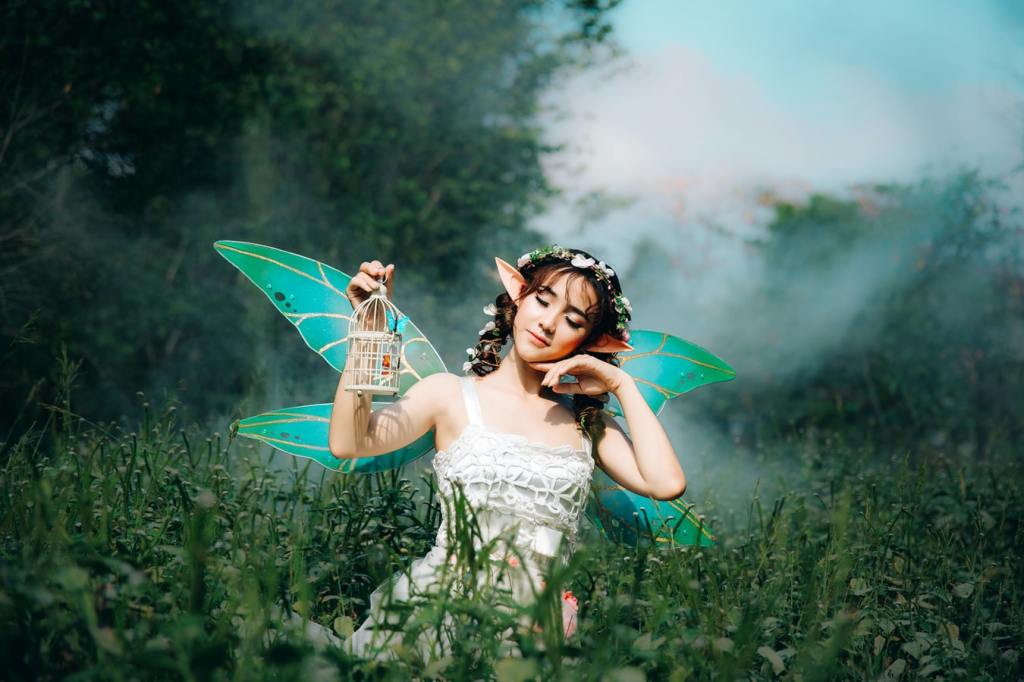
Then you might be thinking of the Elves, Dwarves, and other such mythical creatures, with pointed ears and a proud disposition. However, those are from Norse mythology, and this is not the place to get into those.
In Irish and English folklore, the word “Fairy” essentially referred to Spirits that lived alongside humans. This is not referring specifically to good or bad spirits, but rather a vast range of creatures. These are similar to what the Greeks called Nature spirits, or what the Japanese called Ayakashi, and in India they are called Yaksha. While the Norse use a different system of classification, some of their spirits are part of this category. The same can be said for the Arabic Djinn.
Put simply, these are not Gods, nor Demons, nor Angels. In Magick, they are often given the title of Elementals. The main thing to remember is that they live alongside humans in this material plane, not in some place beyond.
The idea of such things has been around ever since humanity started living together in settlements and communities, and staying separate from Nature. At the edge of Civilisation, where human life met the raw forces of Nature, people had strange experiences and thus the idea of the nature spirits came about. Many legends and folk tales refer to a time when these spirits lived with and mingled with humans, but then the two groups fell apart (referring to how humanity became separate from nature). In most cultures, this referred to the spirits of the trees, rocks, deserts, rivers and mountains. Some could be vast, dwelling in mountains, some small, dwelling in grains of rice.
This belief is called Animism, and was/is a part of ‘primitive’ cultures: the idea that everything has a spirit of it’s own. In other cultures, particularly after organised religion came about, people only began to think of these spirits as dwelling in wild places, such as deep in the desert or in unexplored parts of forests. Whether they are friendly depends on the culture, region and geography.
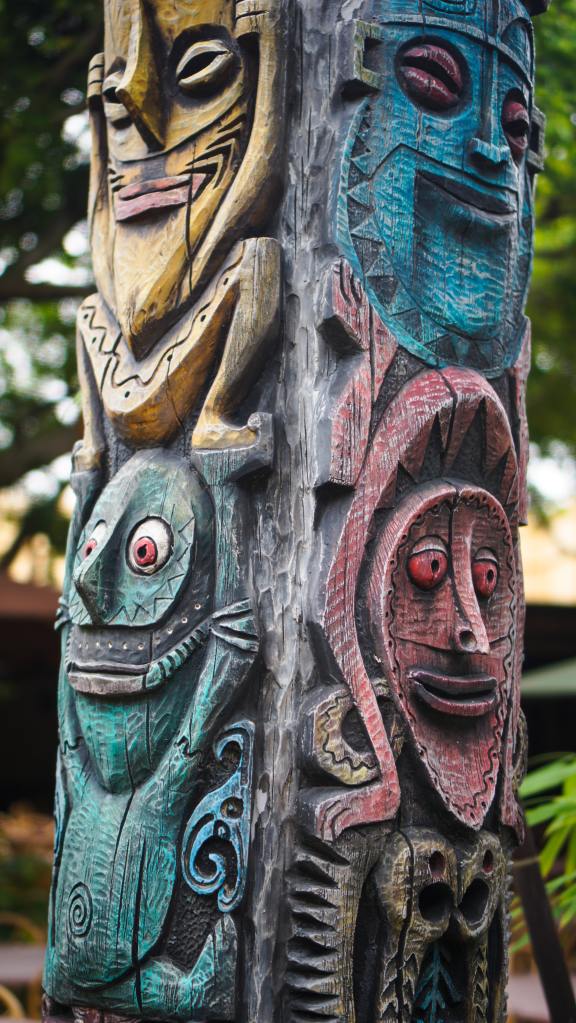
In almost all cases, animals themselves were also considered to be a part of this category. The most well known examples are Native American and Siberian shamanism, where animals are just as much spirits of nature as any mythical creature. To us in our modern societies, this may sound strange, because we have documented animals so well, and even tame and breed them regularly. But to our ancient ancestors, most animals were as strange and magical as any fairy or nymph, not to mention the large number of dangerous wild animals that could attack and kill humans.
Even now, look at the kinds of things we are discovering in the deep sea, which are completely strange and contrary to our expectations. Look at videos or pictures of these things, and see if you don’t feel a sense of mystery, wonder and even fear.
Various cultures then, established all sorts of rules and regulations about how to deal with Nature Spirits, and how to respect their boundaries. This was not mere superstition, but also served to protect people from wandering into the territory of bears, tigers or lions. It kept them safe from various natural phenomena they did not understand. For example, to keep people indoors after night, away from forests and lakes, or to have them stick to roads and not venture off course, to be wary of strangers, to avoid the spread of disease etc. In magick we understand that “as above so below”. Any event occurring on the material plane has a spiritual counterpart, and you will see that all these things that people were afraid of were indeed “Spirits of Nature” .
To those who like films, I highly suggest the 2004 film called The Village. Don’t read any reviews or summaries, just go and watch it. It may give you something to think about.
In England, Scotland and Ireland (and Wales), these were often called the ‘Fae’ (fair folk). “Fair” here means beautiful, not ‘pale’.
Some fae were helpful, some were malicious. The most common distinction I’ve found is between “Night” and “Day” Fae. The Fae/Faery played an important role in the daily lives of people (even more than Gods) and therefore having a good relationship with them was important, as well as keep them at a distance. While the Fae were helpful, they could also be mischievous. They are forces of Nature, and i’m sure I don’t need to tell you that Nature does not always act as humans would like it to.
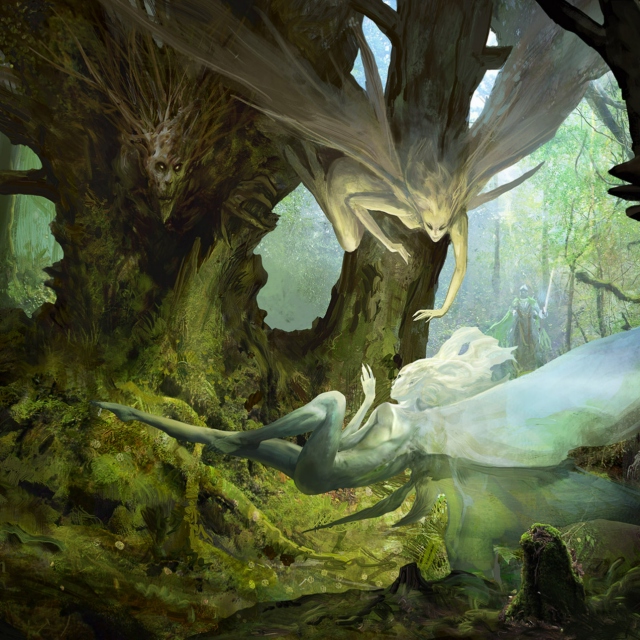
The fundamental thing to understand is that the Fae weren’t ‘good’ or ‘bad’, but that each things had its own purpose, and acted according to its nature. That is perhaps the greatest difference between modern and ancient humanity. Our ancestors lacked the means to control their lives and environment the way we can. As a result, they were not so arrogant and proud. They understood that Nature had its rules, and they had to live according to it. Things like fire were helpful, but if used incorrectly, they would burn you. Things like controlled gas stoves (and now electric ones) have been around for a century or so, but humanity have walked the Earth for over 200,000 years in its present form. When people were blessed with good fortunes or wealth, or when they had a good harvest, it was because they had been blessed by fairies. But when children went missing, when people died of disease or got lost in the woods, it was also fairies.
After the advent of Christianity, the Church struggled to reconcile these beings with their Scripture. It is well known that while several regions of Western Europe embraced the Chruch, the Irish stubbornly insisted on bringing along their pagan legends and folk traditions (ironically, hundreds of years later it would be the opposite, and the Irish would be hated for refusing to leave the Church and join the protestant cause. Ah..the joys organised religion).
The best answer the the Priests could give was that the Fae were somehow “fallen” creatures, similar to fallen angels, and that they must be feared.
Now, it must be clear why the Fairy Salve story has different versions. The version where the pixies are beautiful and live in a castle is probably the original, while the one where they are ugly and live in a hovel is post-Christian.

We could go on and on, but this is a very extensive topic. So I’ll cut it short with some thoughts on a certain famous occultist you’ve probably heard of: William Shaksepeare.
Yes, Shaksepeare was a magus. He was also associated with John Dee (yes, THAT John Dee, noted astrologer and alchemist, who created the Enochian language and tablets along with Edward Kelly, and who served as a spy for Queen Elizabeth).
You see, Shaksepeare was quite a radical individual for his time (like all Occultists). Though today we think of him as ‘sophisticated’ and his works are considered ‘classics’, they weren’t so when he was alive. The language he uses, which now is seen as posh, was actually a bit crude for his time. While he wrote a lot of historical plays, he also threw in spirits, ghosts and other random shit. He was like a 14th century Kurt Cobain. Naturally, it was this radical spirit that made so many love and appreciate his work. Contrary to what some may tell you, society does value and respect free thinkers, especially those who produce creative works.
To anyone who’s read his work, you can see the very clear presence of fairies. The most notable is probably The Tempest, which straight up has a sorcerer who has bound an elemental spirit to him. It is strange to say, but we don’t actually have many written records of what medieval British and Irish people thought of Fairies. Our modern perception of the Fair folk is greatly influenced by people like Shakespeare. This includes the notion of Titania and Oberon being the King and Queen of Fairies, of their general humanoid appearance and attitude.
Honestly, to make a full and complete deconstruction of the exact sources of modern fairy lore would be quite difficult, to put it lightly, so let’s cut it here.
Creating Fairy Salve
I have created this substance only twice. The first was by a pagan method (I was still new to magick and very experimental), the second by a kabbalistic. Both worked extremely well, and I shall outline them roughly.
What is the purpose? Well, it is both a ‘offering’ to be made to elemental spirits, as well as an anointing oil that can aid psychic perception during ritual. Simply put, it will help you sense spiritual phenomena during any sort of spiritual working. This idea is neither new nor limited to the British Isles, and there are several medieval grimoires that call for anointing the temples and eyes before a magick ritual (most commonly the Oil of Jerusalem, which is a certain type of enchanted lamp oil).
The Pagan Method
The pagan method will appeal more to neo-pagans, shamans, witches and the like. It takes longer, and can be easily personalised.
The basic idea is to saturate an oil with herbs, and bless it with the forces of nature. Since elementals/Fae are meant to live alongside humans, this recipe calls for herbs that have been collected from one’s own garden. It doesn’t matter which herbs you pick, but ideally it should be something you grow. Maybe choose the oldest plants you have, or those that appear to have a magical connection. You may also look into the folklore of your region, to see if any herbs or plants stand out as being associated with nature spirits.
You need to pick a time for this, and I would suggest the full moon. Or just the early morning of an auspicious day. Select a certain number of herbs. Perhaps 7 different varieties, and 3 of each?

Next, you must choose the oil. Since we are trying to make a ‘salve’, it’s a good idea to choose something that is more like a paste rather than a complete liquid. Coconut oil or ghee (clarified butter) are good, because they harden when cold. If you plan to burn it as an offering, make sure it’s flammable. If you cannot get these, you can use any normal oil. However, I do suggest going to the effort of procuring these, because this and the herbs are the only two ingredients needed, the rest is magick!
You may, if you want, add some salt. An enchanted salt, or mineral salt is good. Salt is used by many neo-pagans for protection from negative influence.
Put the chosen oil in a steel container, and then put it in a larger container filled with water. This is just a general guideline for heating any kind of oil. If we put the the container with the oil directly on the fire/stove, it will ‘cook’ the oil. In some cases, it may even vaporize the oil. Therefore, we use a water bath, to avoid burning/cooking our ingredients, and also maintain the temperature at 100 degrees Celsius.
Fun fact: This set-up, though very common in modern kitchens, is said to have been discovered by an alchemist. It was a Jewish adept from Alexandria called Mari the Prophetess (1st-3rd Century C.E.). Hence, this set up is known in alchemy as the balneum-Mariae (Bath of Mari).

Bring the water to a boil and allow the oil to heat up. As it heats, you add your herbs, either grown up or just broken up by hand. You can say a prayer at this point to any Gods of your choosing. When I first made it, I had prayed to Diana, a form of Venus and a prominent pagan goddess, and Pan, an important pagan deity for all works concerning nature and the wild. Diana is also considered to be the Goddess that is worshiped by the fair folk themselves. I do not remember exactly why this is, but I think we have Shakespeare to thank for this as well. Use a wooden stirring rod for mixing (never use iron. Steel is acceptable, but not ideal). Mix slowly, on a low heat.
Finally, when you feel the herbs have been fully saturated with the oil (10-15 minutes of heat), take it off the heat and leave it to cool. Do not cover it until it is cool. You may cover it with a cloth, if you have to.
The first process is done. The mixture has been prepared using the four elements (herbs picked from the earth, heated with fire and water, and cooled by air).
The elements are done, and we move on to Darkness. Put the mixture in a closed, opaque contained, and leave it sitting in a cool place where it will not be disturbed or be exposed to the light. Since this is a pagan method, you can also thrown in any consecrated crystals or other objects into this.
Here, the substance is blessed by the forces of darkness, whose blessing is essential so that obstacles and challenges are not faced in the future. Ideally, this should can sit for at least a week, but probably for longer. You’re waiting for the full moon. However, let it be no longer than a month, to avoid rotting or decay.
On the day of the full moon, you shall filter out the herbal components, and put the oil in a clear glass jar (plastic works too). These are no longer needed and can be discarded (ideally thrown back into the soil to decompose). Be sure to remove any stones, crystals or object you’ve put in.
Now begins the consecration by the four elements and Light (both of the Sun and the Moon). On the night of the full moon, put this jar in a container of water, and leave it outside or by a window. The water should ideally be from a natural source, such as a spring, river or from rain. When I was doing it, I did a ritual to make it rain, which worked (this was the very first time my magick had worked on such a grand level, and the single most important event that cemented by spiritual faith permanently). If not, then get some drinking water (do not get water from the bathroom sink). If you have enough, this water can also be used for the initial water bath.
It’s good if it’s directly exposed to the moon all night. But, since this is difficult for many people, it’s okay as long as it is outside or by an open window, where it can be hit by the wind. Say a prayer to the Moon if you want, and to the Fae of the Night to bless it.
Here, the salve is being consecrated once again by Air and Water, as well the Moon. Leave this overnight, from Sunrise to Sunset.
The next Day, at Sunrise, take this jar out of the water and put it in the ground. Do not bury it completely, and make sure the top is sticking out. You can also use a planting pot, or just a container with dirt in it. You also need some incense. The way I did it, is half buried the jar in an empty pot, then covered it with a larger plastic container with a incense cone next to it. This ensured that the smoke actually touched jar instead of just blowing away. Leave this in the sunlight until sunset. Call on the Sun and to the Day Faeries for blessing it.
The salve is now being consecrated by the Sun, by Fire (incense) and Earth.
When I first made this, I was lucky enough that the Full Moon was on a Monday, and immediately following a Summer solstice on Sunday. The second part of the consecration was on Tuesday. Don’t obsess over timing, but it’s good if you happen upon such an auspicious time.

Now, at sunset you take your jar, draw upon it a sigil that represents spiritual sight, or something else that is relevant. You’re free to create this sigil however you want, or choose a symbol that already exists and is important to you. You may even use the symbols of any Gods you worship.
At night you will conduct a ritual where you shall call upon the power of the forces of nature to bless and complete the Fairy Salve. A good set of deities is Diana, Pan, Titania and Oberon, and maybe even Gaia, the Earth Mother. Titania and Oberon may be seen as essential, since the substance is made by their authority. It’s a good idea to give some offering as well (candles, milk/honey, fruits etc). State the purpose of the Fairy Salve, and you’re pretty much good. When the ritual is done, thank the forces involved and clear your space. Your Fairy Salve is done. Use it as an offering, and anoint your temples and eye lids before a ritual.
As we discussed before, a good way to offer it is to burn it in a traditional oil lamp.
The Kabbalistic Method
For this method we are going to follow a similar, yet different approach. It is better for those who want to make the Salve more quickly, but don’t mind putting in more work. Ideal for kabbalists, thelemites, rosicrucians and hermeticists.

The Pagan method has relatively simple instructions, because much of the work is begin done by the spiritual forces of nature over a longer period of time. Here, the work is done mainly the the magician him/herself.
Once again, we begin by collecting the herbs. Once again, it is good to collect garden herbs, or herbs in your kitchen. We shall select 7 different varieties of herbs, once for each planet.
For this you must do your own research, and see which herbs are more commonly available in your region. I could give you an arbitrary list, but it would be better to make your own list. You can easily find the planetary rulers of most common herbs online. Ideally, pick herbs which has some association with psychic senses, nature spirits or magick. The variety of herbs needed for fairy salve are what make it more complex than your usual magick oils for things like prosperity or love, which usually only need a few herbs of any single planets.
Let’s say this is too daunting a task. In that case, you may select only herbs associated with the Moon, since the Moon rules psychic powers and visions. You also need Frankincense (or some other sweet smelling resin that can be melted). Just look for powdered frankincense, which should be easy to find, as it is commonly used as incense. If you can’t, do magick to get it.
Next, we pick a base again (ideally coconut oil or ghee, or something similar, which hardens when cold. This is not compulsory, but these are easier to rub on your eyes. Whatever you pick, ensure it smells nice and is pleasant. After all, why would you offer something repulsive to the fair folk? So no, don’t go busting out the mustard oil). We do this on Monday, in the hour of the Moon, during the waxing phase.f.
We now prepare it again, as we did before, in a water bath, adding in our broken up ingredients into the heating oil. As we stir it, we visualise white light comic from above and saturating the mixture.
We once again let it cool uncovered. The mixture has once again been blessed by the four elements, and you must offer a silent prayer and thanks, for these four elements make up the mechanistic Universe as we know it.
You shall take the mixture and pour it into an opaque container, so that no light may touch it. Having done so, draw upon it the symbol of Saturn, the bringer of Death, the collector of Dues. Place it in a cool dark place, and visualized a deep and complete darkness surrounding it, purging all that is unneeded.

The mixture shall now be left untouched over night, where the herbs shall give up the last of their essence. The next morning, awaken at sunrise and thank the lord Saturn. Erase the symbol from the container, and open it. With a solemn and serious heart, filter out the herbs. Heat the mixture again in a bath, and now add it your frankincense. Let it remain in heat for as long as it takes the powder to melt dissolve. Do not add large pieces of frankincense, as these will never dissolve. Everything must be finely powdered. When it is done, take it off the heat and pour the mixture into a clear glass jar and seal it shut. This shall serve as the philosophic egg, where the mixture shall hibernate. Be sure not to add the mixture if it is too hot and the glass is too cold, since the glass may crack.
Take the mixture outside and lay it to rest in Earth. Do no bury it completely, and let it’s top stick out, so that it may breathe the life giving Air, and lay before the radiant light of its father (Sun). In the soil around it, trace an upward pointing triangle (Fire) and draw on each point, the symbol of the Sun, Venus and Jupiter. Pray that, by their benevolence, they may awaken the spirit within. Now you shall mourn it’s passing, and offer a silent plea to the Spirits of the Day, to impart their blessing on it.
At sunset, you shall go again to the place of the burial, and erase the planetary symbols. Now trace a downward triangle (Water) around it, and draw the symbols of Moon, Mercury and Mars around it. Pray that they, by their harshness, by invigorate the spirit within the salve, and purge it of all impurities. Offer a silent plea to the spirits of the Night, that they may remove any obstacles in the working to be done. The ointment is in darkness again, but this time it has the guiding light of its Mother (Moon). Now leave with a hopeful heart, praying for the success of your working.
The next morning, awaken when you may with a happy and joyous heart. Wash your body and go to the place of burial. Remove any remaining symbols and offer heartfelt gratitude. Take the jar and clean it by submerging it in water (making sure no water gets in), and then cleanse it with incense, thus removing both physical and spiritual impurities.
Draw upon it the following symbols: Around the circumference, you shall draw the symbols of the four elements. At the bottom, draw the planetary hexagram, and on top of the lid, draw a pentagram. On either side of it, the symbols of Uranus and Neptune, and the symbol of Pluto at the bottom. Reflect for a moment, on a purpose of this ointment.
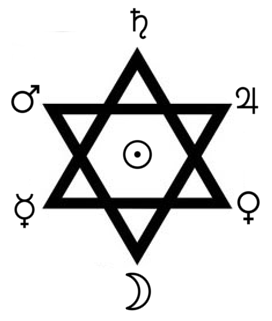
Now do a ritual of consecration. Begin with the lesser banishing ritual of the pentagram, and the banishing ritual of the hexagram. As you say the last words, IAO, visualized brilliant white light streaming from the heavens into the jar, and saturating the mixture within. You may also use any other rituals that are used in your own tradition. These are simply the ones I use.
Close your eyes and meditate with the jar in hand, and make a prayer to the Elementals of the four quarters. Pray to the the elementals of Fire and their Ruler, and trace the Invoking pentagram of Fire with your finger on the jar. Do the same for Water, Air and Earth. The spirits and Kings are named thus:
| Element | Name of Elementals | Name of Ruler |
| Fire | Salamandars | Djinn |
| Water | Undynes | Nycksa |
| Air | Sylphs | Paralda |
| Earth | Gnomes | Ghob |
The Pentagrams traced should be visualised as red, blue, yellow and green respectively. When you feel the ritual is done, give thanks and welcome the elementals into your life. As them for their favour, and give offerings often. Warn them regarding mischief or harm towards any living thing.

Now give your heartfelt thanks, perform the Lesser Banishing again and you’re done.
Now you may make a small offering of thanks that very night. You can leave some food or drink outside in your garden and balcony, and call on the Faeries/Elementals to partake. Leave it overnight, throw it out the next day. To test the efficacy of your Ointment, apply some on your temples and eyelids. You should feel its power immediately, and enter into a light trance. If you do not feel it, then it is possible the mixture is not charged enough. It can be charged by leaving it on an altar or meditating on it. Remember, if your psychic senses are not fully developed, you may not immediately see spirits. However, this will strengthen your psychic sense greatly. Do not obsess over being able to physically see the spiritual beings you are invoking. If it has to happen, it will happen in time, when you are ready.
In Conclusion
I know, the rituals seem extensive, but they’re actually a lot quicker to do. It actually takes longer to describe them than do them. You’re free to omit any parts you feel like, or add any of your own, or mix and match as you please. It can be as simple, or as elaborate as you want.
I mean, you could simply take some random oil, dissolve some moon herbs in it, bless it and call it a day. But the amount of energy put into magick determines its result. If you can muster up all the energy needed with a simple prayer, go right ahead. But most will require rituals to build up the same energy. Like everything on this blog, the process if described to be extremely friendly to people who are new to magick. Those who are more proficient are free to use what they need and discard what they don’t (although going through the whole process will only generate more energy).
I mean, the second time I made the ointment, I did not do any prayers or mourning, nor did I trace the triangles. That’s because when I buried my jar, I was able to mentally call on the aid of the planets. But for many others, the visual aid will help greatly. Some people may even go a step further, and place objects associated with the planets around the jar.
It is up to you when you make offerings to the Elementals. You can use the Fairy Ointment during any sort of ritual where you need to invoke them or their rulers. It may be a good idea to make an offering of this ointment every Solstice and Equinox. At least on the both Solstices.
So there you have it, I have finally answered what is probably the very first question I was ever asked by a reader all those years ago.
Until Next Time
~White Raven

How do you draw the planetary sigil onto the jar? By a consecrated marker?
LikeLike
Yep. Any marker will do. Permanent marker will work well, because it can technically still be removed from glass, but won’t get smudged.
LikeLike
I followed the second method. After the night leaving the clear jar in soil, my house lost electricity for a whole day. Not sure if coincidence or the faes dont like electricity.
LikeLike
Interesting. I’ve never talked about this, but magickal energy does seem to have some electro-magnetic component to it. I’ve seen often that when the energies raised are very strong, they can affect electrical fixtures and power lines. It means the ritual was strong.
I hope the problem is now resolved.
Also, as the saying goes “there are no coincidences”.
LikeLike
What if one lives in an apartment building and the only burial that can be done is in a plant pot at the balcony? Is it still doable?
LikeLike
yes, it can. That’s pretty much how I did it.
LikeLike